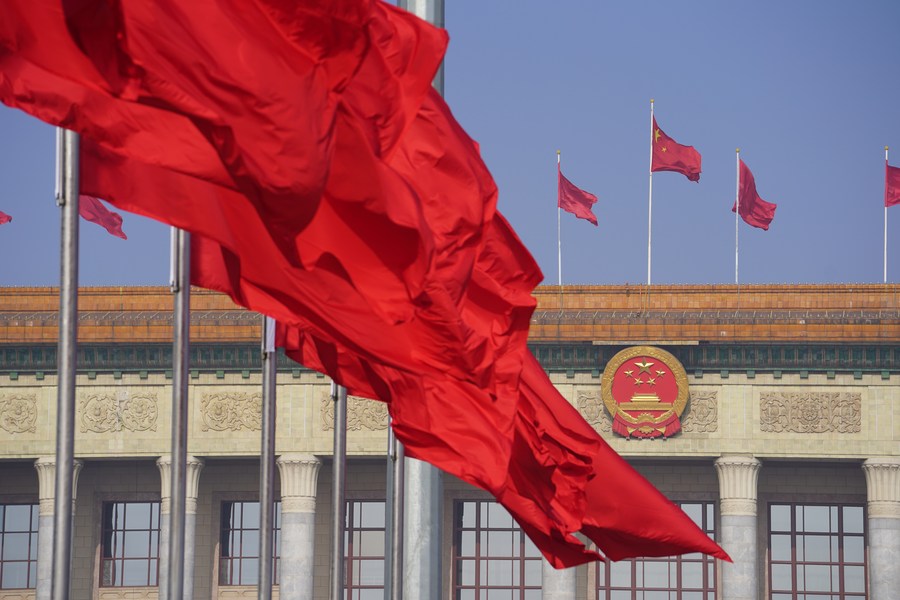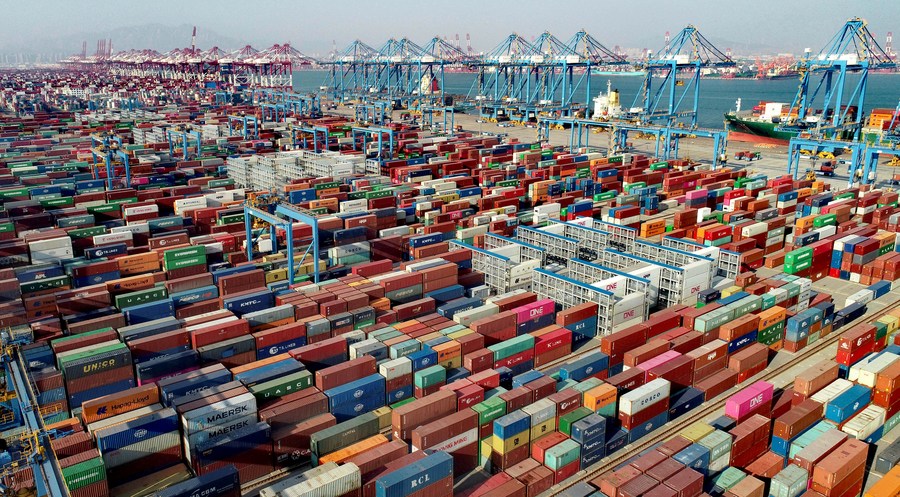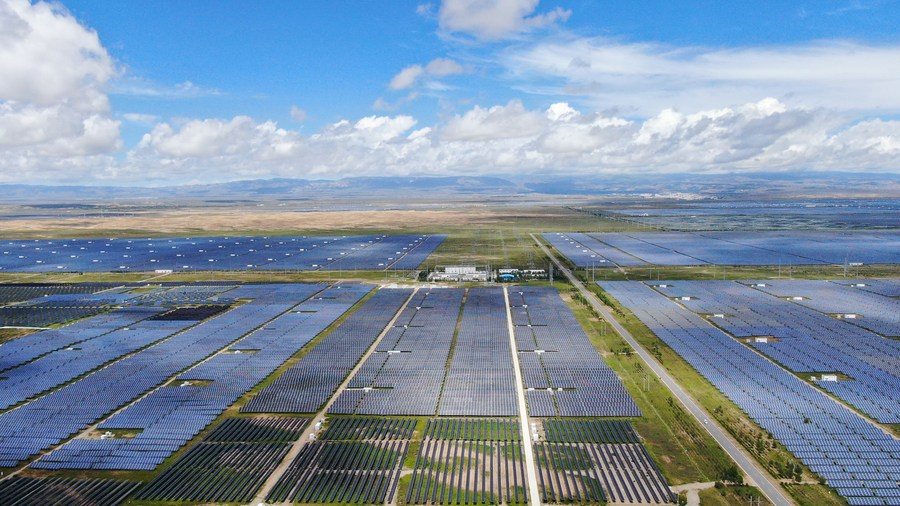What to expect at 'two sessions' as China begins new journey
The following are some of the issues expected to be high on the agenda of the two sessions.
China's top legislature and political advisory body will start annual sessions this week, returning to their traditional March schedule after last year's events were postponed to May due to the COVID-19 epidemic.

Photo taken on May 22, 2020 shows flags on the Tian'anmen Square and atop the Great Hall of the People in Beijing, capital of China. (Xinhua/Xing Guangli)
As the year 2021 marks the start of the 14th Five-Year Plan period (2021-2025), the world will watch how China, with the elimination of absolute poverty just declared, charts its course toward fully building a modern socialist country.
The fourth session of the 13th National People's Congress (NPC) is scheduled to open on Friday, a day after the opening of the fourth session of the 13th National Committee of the Chinese People's Political Consultative Conference (CPPCC).
In addition to hearing the annual work reports of the government, top legislature, top court and top procuratorate, lawmakers will also review a blueprint for China's development in the next five to 15 years — the draft outline of the 14th Five-Year Plan and the long-range objectives through the year 2035.
The following are some of the issues expected to be high on the agenda of the two sessions.

People work at a workshop of Harbin Dongan Automotive Engine Manufacturing Co., Ltd. in northeast China's Heilongjiang Province, Feb. 25, 2021. (Xinhua)
ECONOMIC DEVELOPMENT GOALS
Amid the COVID-19 pandemic, China was the only major economy in the world to register positive growth in 2020, with its GDP expanding 2.3 percent to hit 101.6 trillion yuan (about 15.7 trillion U.S. dollars) in the year.
On Friday when the government work report is delivered to the NPC for deliberation, this year's development goals will be closely watched.
Last year, no specific GDP growth figure was set in the government work report due to the uncertainty brought by COVID-19 and the world economic and trade environment.
Zhang Liqun, a research fellow with the Development Research Center of the State Council, said China's economy is resilient, has potential and will maintain sustained growth in 2021.
But he said the primary goal of economic development is not to seek a nice-looking GDP figure but to raise the quality of the growth and ensure people's well-being.
Major development targets listed in the 14th Five-Year Plan, including economic growth, newly created jobs in urban areas, major projects, as well as pollution control will also draw attention.

Aerial photo taken on Feb. 19, 2021 shows containers at the automatic dock of the Qingdao port in Qingdao, east China's Shandong Province. (Xinhua/Zhang Jingang)
DUAL CIRCULATION
China's "dual circulation" development paradigm, in which domestic and overseas markets reinforce each other, with the domestic market as the mainstay, is expected to be another hot topic during the two sessions.
The 14th Five-Year Plan will further clarify how China will implement the dual circulation strategy and achieve high-quality development.
Unleashing domestic demand is crucial to driving China's growth, but this new development paradigm does not mean China will backpedal on its opening-up, officials and experts have said.
Dual circulation is seen as a strategic and win-win choice for China to reshape its international cooperation and new competitive edge, said Justin Yifu Lin, former World Bank chief economist and honorary dean of the National School of Development at Peking University.
SCI-TECH INNOVATION
Chinese authorities have said the country will uphold the central role of innovation in its modernization drive and implement an innovation-driven strategy for the next five to 15 years. It will strategically underpin its national development with self-reliance in science and technology.
"We still face challenges including a complex international environment, and there is still a supply gap in the overall innovation capacity," said Xue Lan, a professor from Tsinghua University.
Xue said the country's high-quality development must rely on sci-tech innovation.
National legislators and political advisors, many of whom are scientists and Big Tech executives, are expected to discuss the ways to build China's sci-tech strength and create an enabling environment for innovation.

Aerial photo taken on Aug. 17, 2020 shows a photovoltaic power station at a green industrial development park in the Tibetan Autonomous Prefecture of Hainan, northwest China's Qinghai Province. (Xinhua/Zhang Long)
GREEN DEVELOPMENT
A complete economic and societal shift to cleaner energy and fewer polluting emissions conforms to the people's expectations for high-quality development.
Last year, China announced that it would strive to peak carbon dioxide emissions by 2030 and achieve carbon neutrality by 2060.
To that end, carbon emission control has been included in China's top policy priorities for 2021.
In January, Minister of Ecology and Environment Huang Runqiu said the country has begun formulating an action plan to peak carbon dioxide emissions before 2030 and will accelerate the transformation toward green and low-carbon development across China's society over the next 10 years.
Wu Gang, a member of the CPPCC National Committee and chairman of Xinjiang Goldwind Sci & Tech Co., Ltd., said he had submitted proposals on achieving carbon neutrality and would discuss with fellow political advisors about building a clean and diversified energy supply system.
LEGISLATION
As the highest organ of state power, the NPC exercises various functions and powers including enacting and amending basic laws.
In 2019, the NPC session adopted the Foreign Investment Law. Last year, the milestone Civil Code was adopted.
The upcoming session will see lawmakers deliberate draft amendments to the organic law and procedural rules of the NPC, which deal with the operations of the country's top legislature.
According to sources from the top legislature, the draft amendments assimilate effective practices in legislative processes, such as making NPC sessions more open and efficient.

